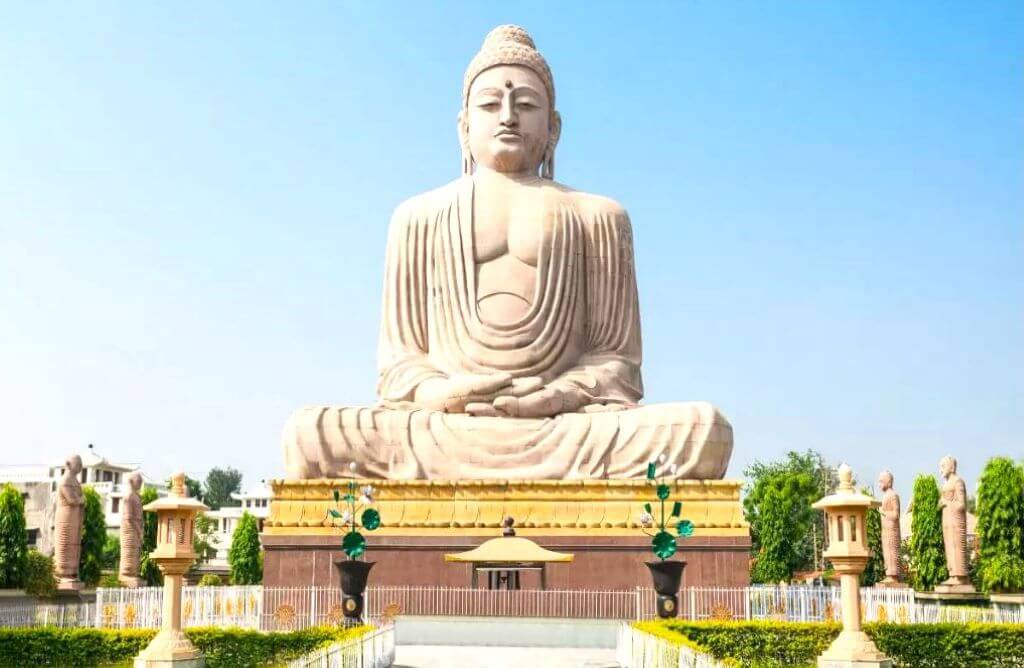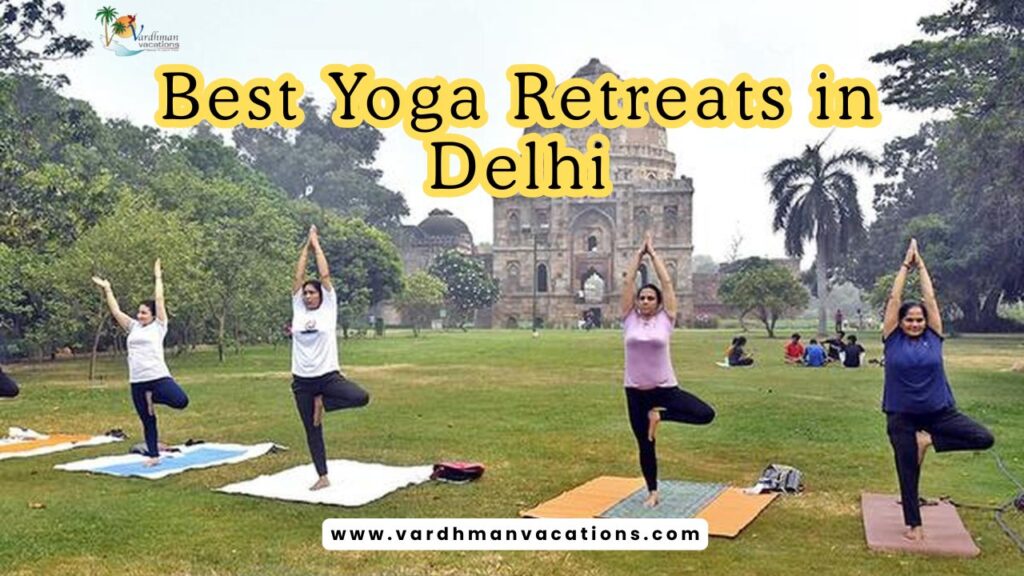India is not only the birthplace of Buddhism but also home to some of the world’s most famous Buddhist temples and monasteries. These sites are rich in history and hold great spiritual meaning. They attract both pilgrims and travelers alike. You can explore the place where Buddha achieved enlightenment and the locations where he gave his first sermon. India’s Buddhist heritage offers a meaningful experience for everyone who visits. Here’s a guide to some of the most famous Buddhist temples and monasteries in India.
Top 20 Buddhist Temples and Monasteries
Mahabodhi Temple, Bodh Gaya Bihar
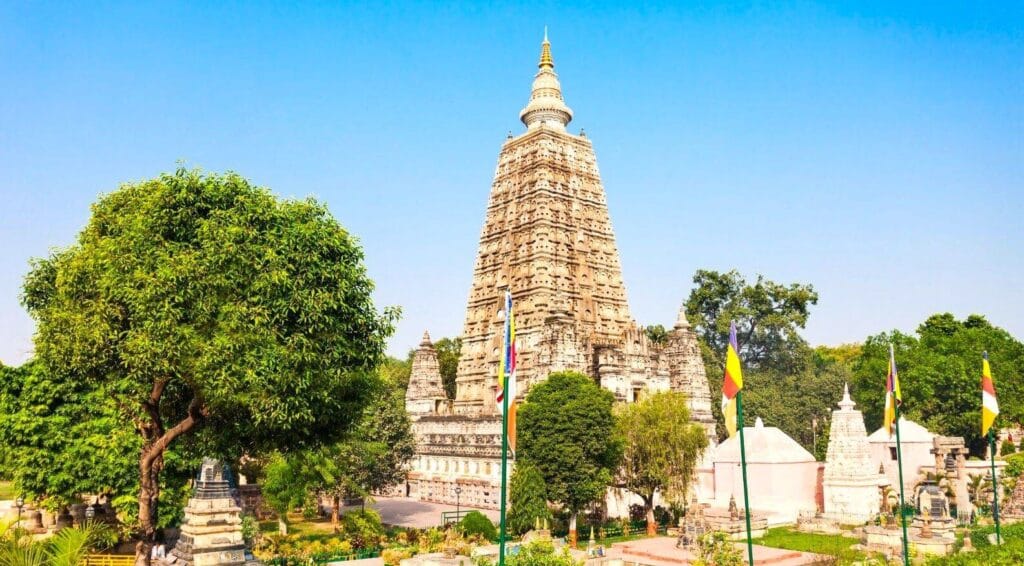
The Mahabodhi Temple in Bodh Gaya is one of the most sacred places for Buddhists. It is where Lord Buddha became enlightened under the Bodhi Tree. The temple features a tall spire and detailed carvings that show different scenes from Buddha’s life.
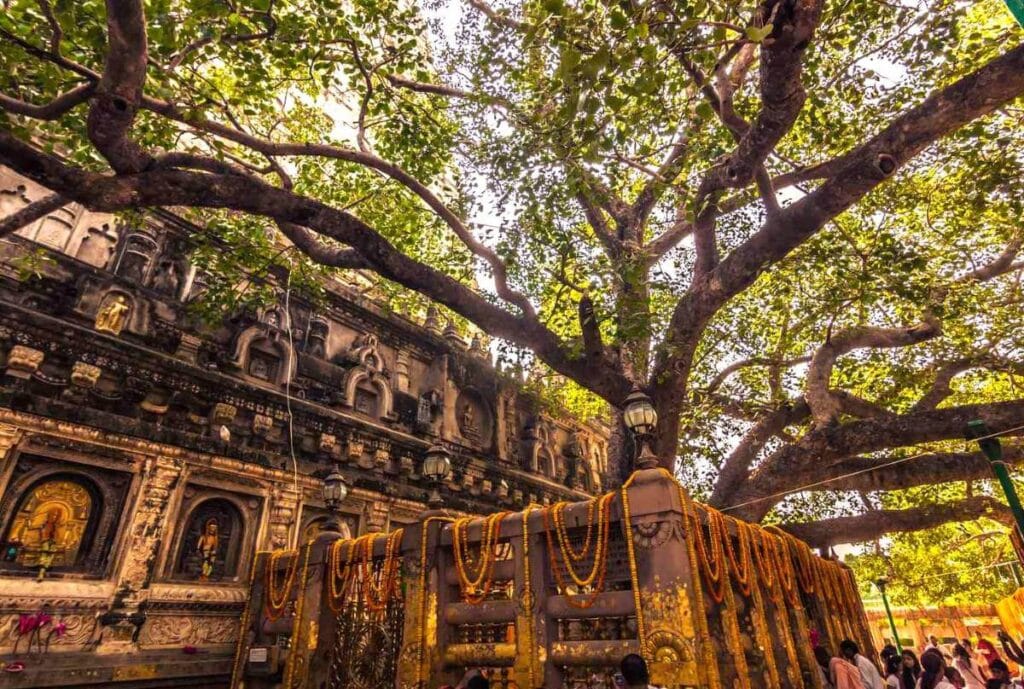
The peaceful atmosphere at the temple is perfect for meditation and reflection. Visitors can sit under the sacred Bodhi Tree, which is a descendant of the original tree where Buddha meditated. This UNESCO World Heritage Site is a must-see for anyone interested in Buddhism or seeking spiritual peace.
Mahaparinirvana Temple, Kushinagar, Uttar Pradesh
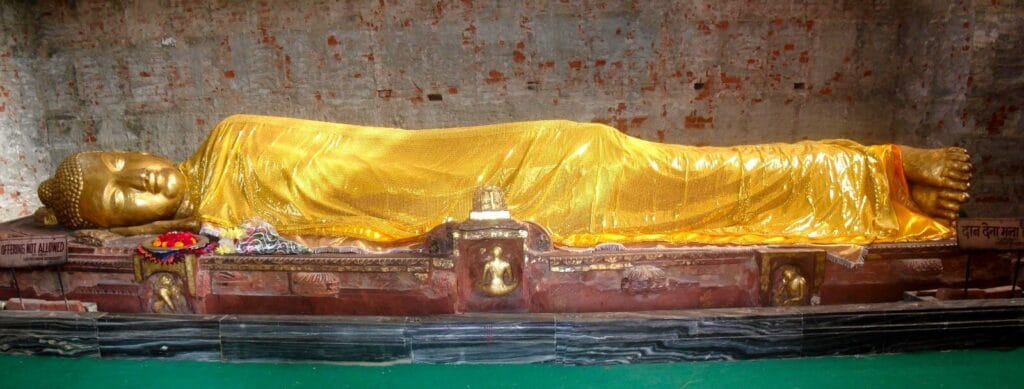
Kushinagar is where Lord Buddha attained Mahaparinirvana, or ultimate peace after his earthly journey ended. The Mahaparinirvana Temple is home to a large reclining Buddha statue that beautifully captures Buddha in his final moments. The statue is an awe-inspiring sight, symbolizing the passing of the Buddha into Nirvana.
The serene surroundings, with lush gardens and quiet spaces, provide an ideal setting for reflection. This site is a key pilgrimage destination for Buddhists around the world and an important landmark in Buddha’s journey to enlightenment and ultimate freedom.
Wat Thai Temple, Kushinagar, Uttar Pradesh
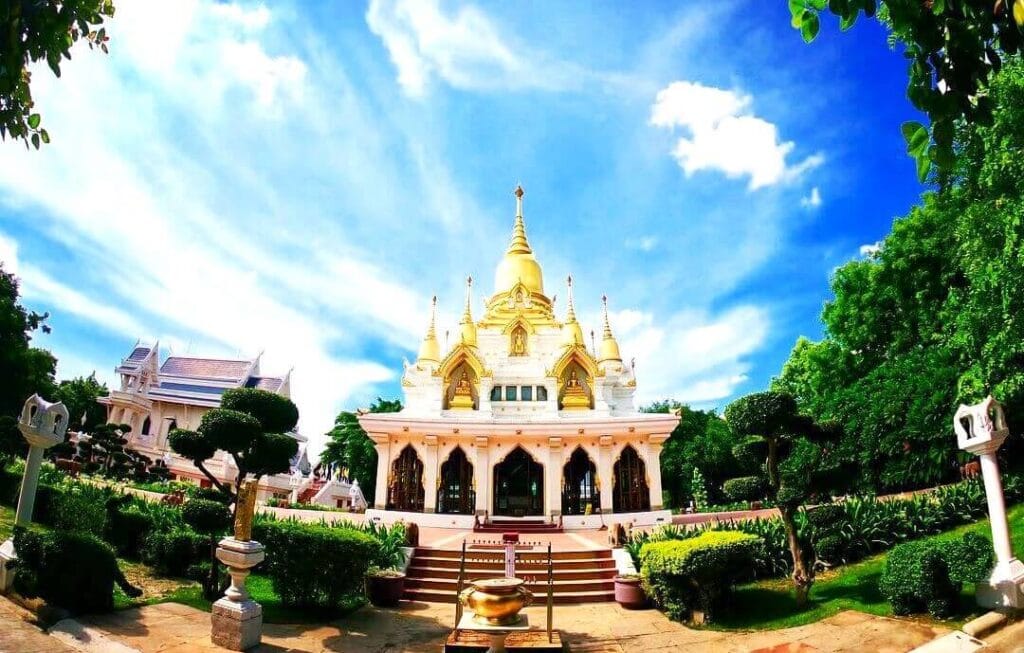
The Wat Thai Temple in Kushinagar is a beautiful blend of Thai and Indian Buddhist traditions. It features a striking golden spire and detailed carvings that illustrate Buddha’s teachings. The temple is set in peaceful gardens, making it a great place to meditate. It also hosts cultural events and Buddhist festivals, allowing visitors to experience both Thai and Indian Buddhist cultures.
Ramabhar Stupa, Kushinagar
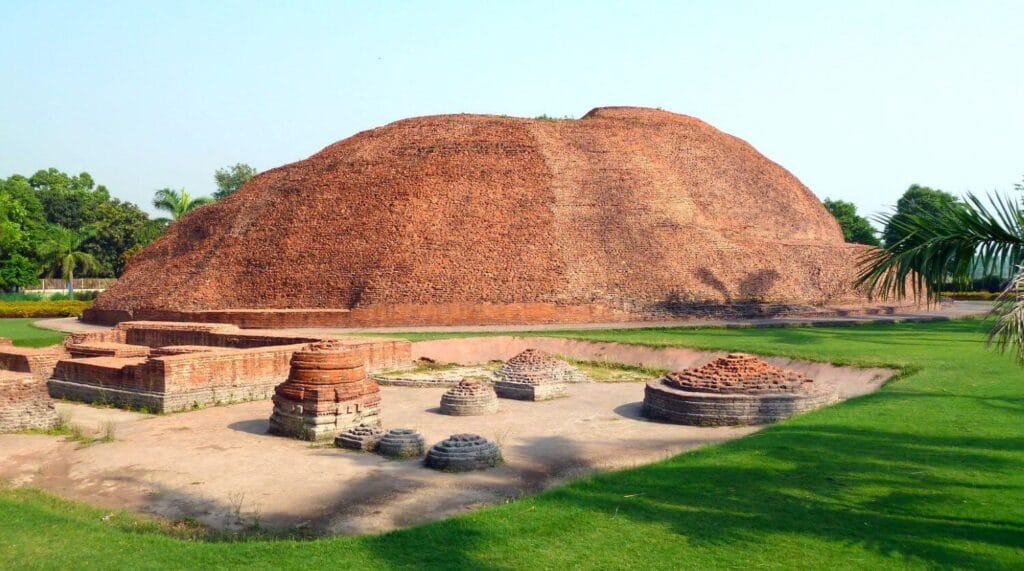
The Ramabhar Stupa is where Lord Buddha was cremated after he passed away. Although it is not as famous as some other sites, it is important for its history and spirituality. It is believed to have been constructed by Emperor Ashoka.
It stands 15 meters high and is surrounded by peaceful grounds that are great for reflection and meditation. Visiting the Ramabhar Stupa is a meaningful experience for those who want to learn about key moments in Buddha’s life, as it marks the end of his time on Earth.
Nalanda Mahavihara, Bihar
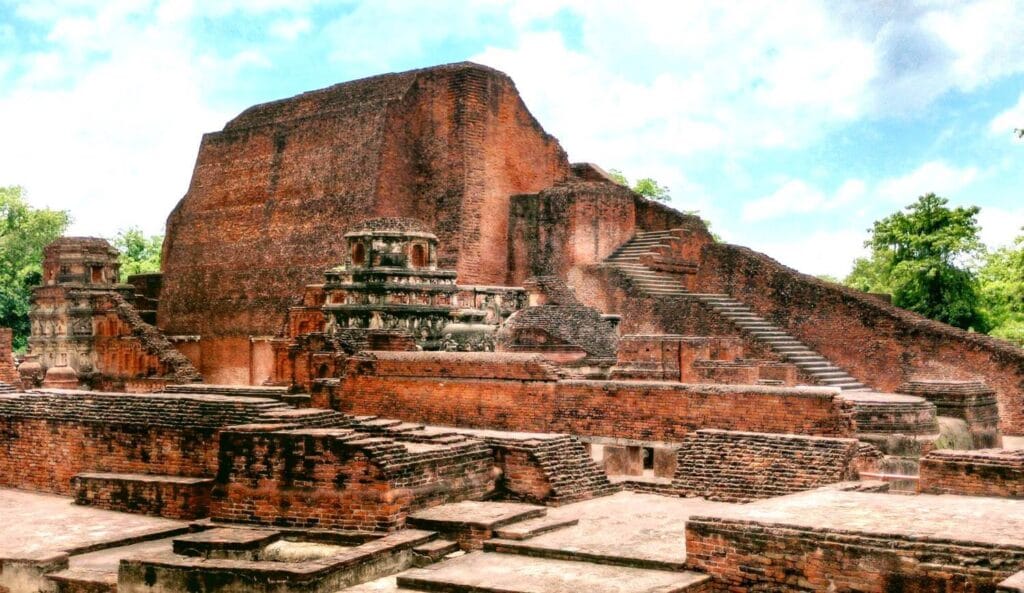
Nalanda Mahavihara is a UNESCO World Heritage Site and one of the oldest centers of Buddhist learning in India. It was established during the Gupta period and attracted scholars from around the world. Today, visitors can see the ruins of the ancient university, including its monasteries, classrooms, and libraries, which provide a glimpse into the past.
As you walk through the ruins, you can sense the legacy of the thousands of students who once studied here. Nalanda is a meaningful site not just for Buddhist pilgrims, but also for history lovers and those interested in ancient centers of learning.
Tawang Monastery, Arunachal Pradesh
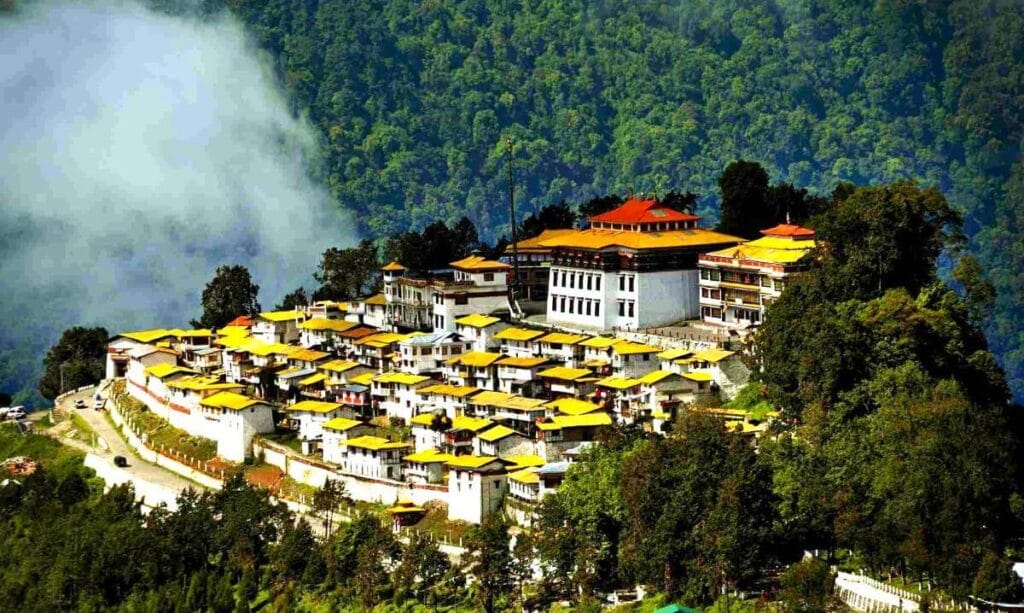
Tawang Monastery is the largest monastery in India and is located in Arunachal Pradesh in the northeast. It was built in the 17th century and serves as an important center for Tibetan Buddhism. The monastery offers stunning views of the Tawang Valley.
Besides being a spiritual place, Tawang Monastery is also a cultural center for the region. Festivals like the Tawang Festival let visitors see traditional Buddhist rituals and performances. The peaceful environment and beautiful scenery make Tawang Monastery an ideal place for relaxation and reflection.
Rumtek Monastery, Gangtok, Sikkim
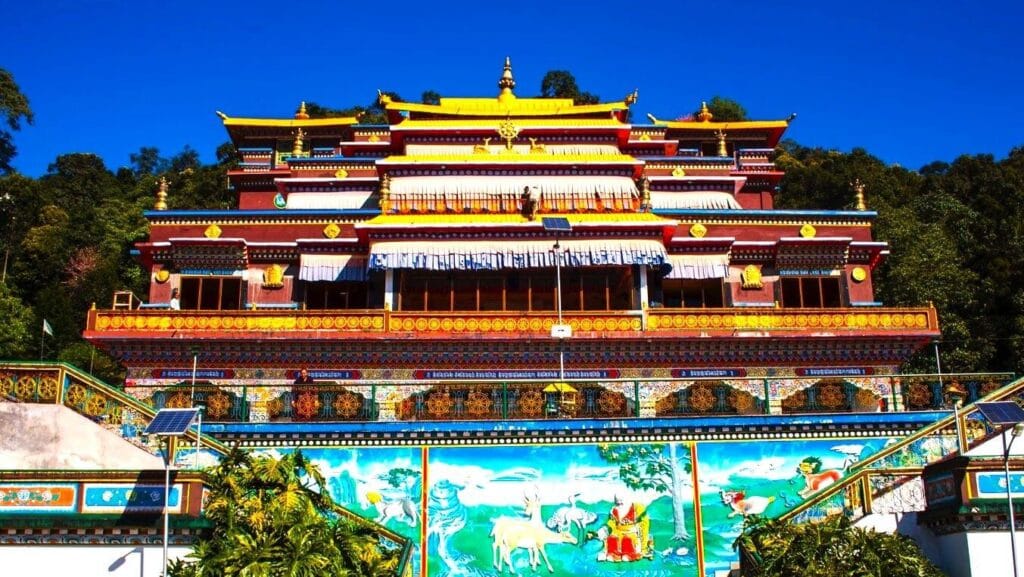
Rumtek Monastery is near Gangtok, the capital of Sikkim. It is an important monastery for the Kagyu sect of Tibetan Buddhism. The monastery has a grand golden stupa and beautiful architecture in a peaceful atmosphere.
Visitors can explore the prayer halls, admire the murals, and join the calm rituals done by the monks. The monastery also has many Buddhist relics and ancient texts. It is a great place for anyone interested in Tibetan Buddhism and seeking spiritual peace.
Namgyal Monastery, Dharamsala, Himachal Pradesh
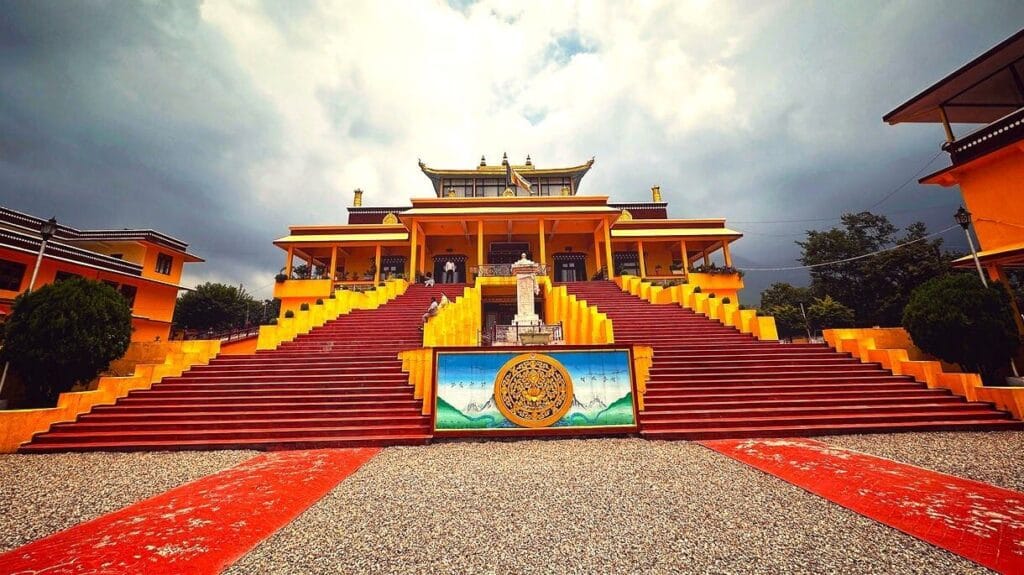
Namgyal Monastery is located in Dharamsala, Himachal Pradesh. It is also known as the Dalai Lama’s temple and is one of the most important Tibetan Buddhist monasteries outside of Tibet. The monastery serves as a spiritual and cultural center for Tibetan Buddhists in India.
Visitors can join in religious activities, such as meditation sessions and teachings by the Dalai Lama. The peaceful environment, surrounded by snow-capped mountains, provides a great place for meditation and reflection.
Tsuglagkhang Temple Complex, Dharamsala, Himachal Pradesh
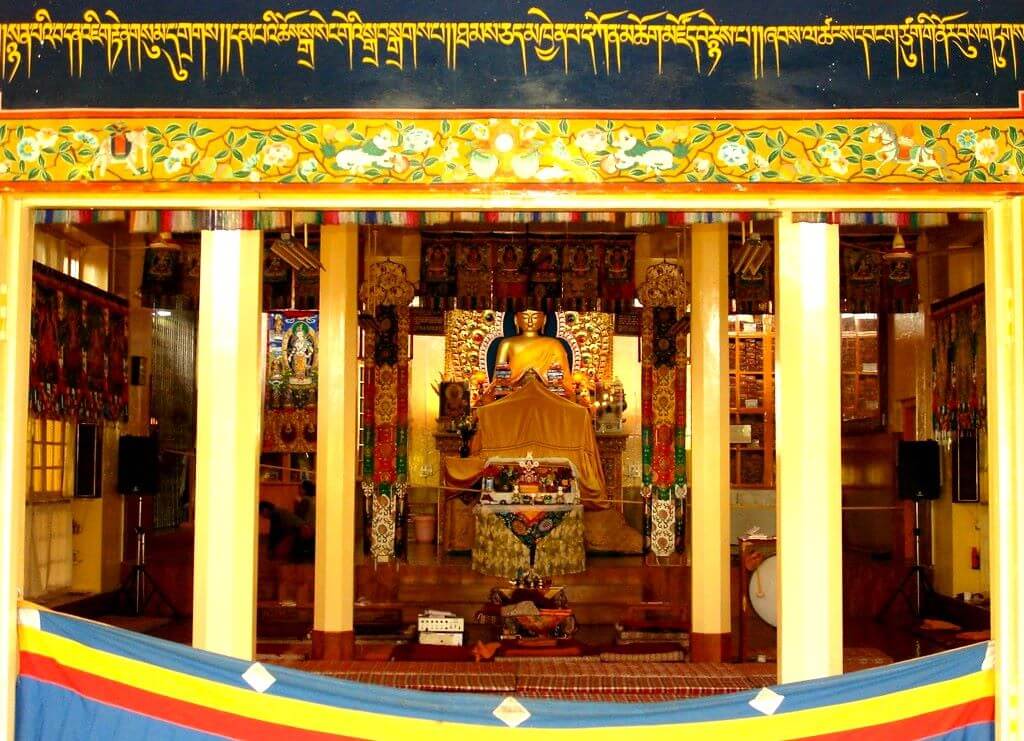
The Tsuglagkhang Temple Complex in Dharamsala, Himachal Pradesh, is an important Tibetan Buddhist center in India. It is home to the Dalai Lama and serves as the main spiritual center for the Tibetan community in exile. The complex contains several key buildings, including the Tsuglagkhang Temple, a quiet courtyard, and a museum featuring Tibetan Buddhist art and artifacts.
The Tsuglagkhang Temple is known for its impressive statues of Buddha, Avalokitesvara (the Bodhisattva of Compassion), and Padmasambhava.
Visitors can join many monks and locals who come here for prayer and meditation. The peaceful surroundings, set in the Himalayan foothills, make it a great place for reflection and spiritual practice. The nearby residence of the Dalai Lama adds to the complex’s importance, making it a must-visit for anyone interested in Tibetan Buddhism and the teachings of the Dalai Lama.
Tabo Monastery, Spiti Valley, Himachal Pradesh
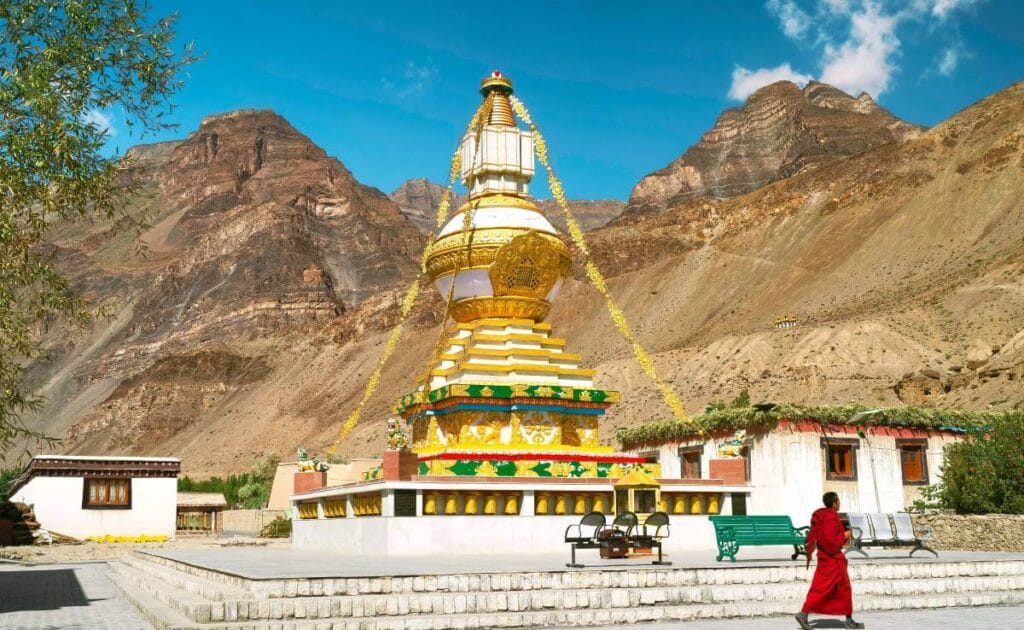
Tabo Monastery is in the Spiti Valley, Himachal Pradesh. It is often called the “Ajanta of the Himalayas” because of its ancient murals and frescoes. This monastery was established in the 10th century and is one of the oldest Buddhist monasteries still in use today in India.
The monastery is known for its rich history, colorful murals, and sacred relics. For centuries, it has been an important center for Buddhist learning and attracts both scholars and pilgrims. The peaceful surroundings make Tabo Monastery a great place for those looking for calm and spiritual growth.
Ghoom Monastery, Darjeeling
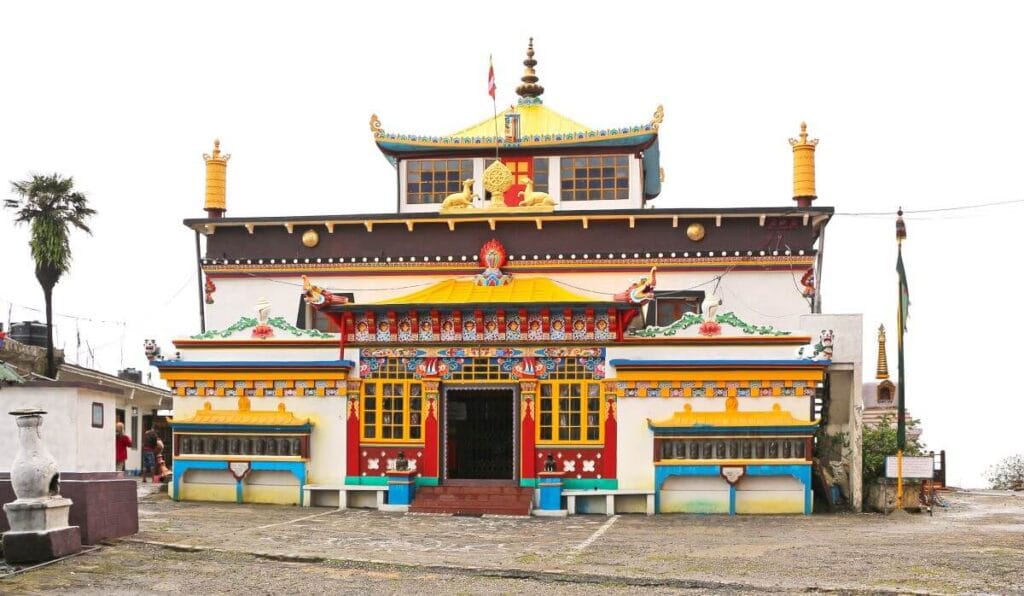
Ghoom Monastery is located in the scenic hill station of Darjeeling. It features a 15-foot-high statue of the Maitreya Buddha. The monastery provides a calm space for reflection and meditation, with beautiful views of the nearby mountains.
It is an important place for Tibetan Buddhists and is known for its peaceful atmosphere and lovely prayer halls. This is a perfect spot to relax and take in the spiritual environment while exploring the charming town of Darjeeling.
Namdroling Monastery (Golden Temple), Karnataka
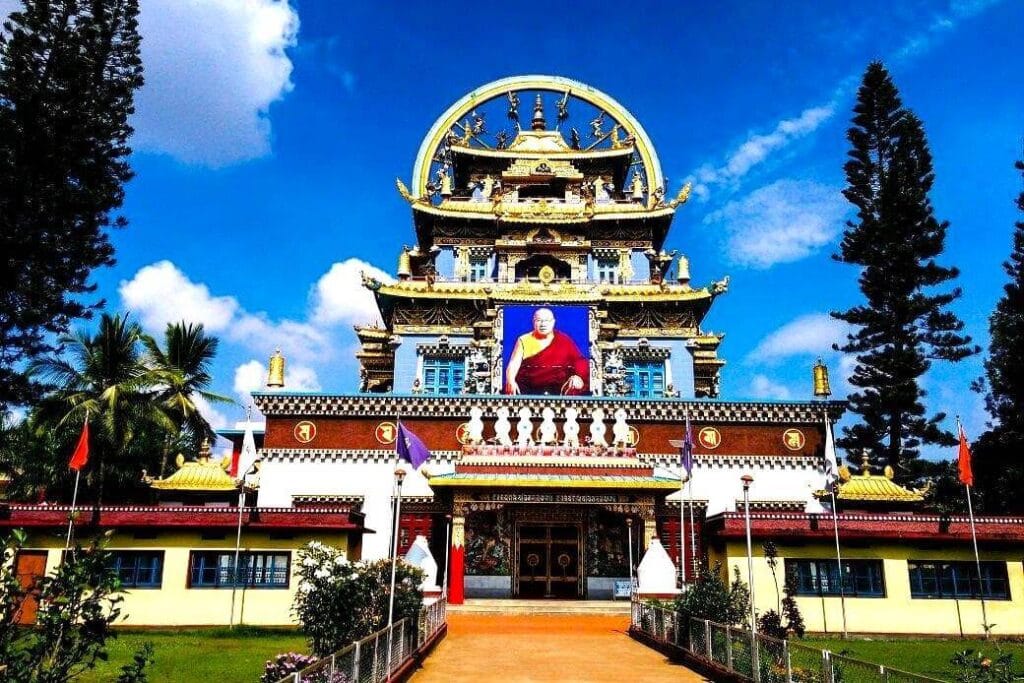
The Namdroling Monastery in Bylakuppe is one of the largest Tibetan communities in India and an important site for Tibetan Buddhism. It features the Golden Temple, which has large golden statues of Buddha, Guru Padmasambhava, and Amitayus.
The monastery’s colorful decorations and peaceful atmosphere draw visitors from around the world. It is a great place to see Tibetan Buddhist traditions and learn about the culture of Tibetan communities in India.
Maha Bodhi Society Temple, Bangalore, Karnataka
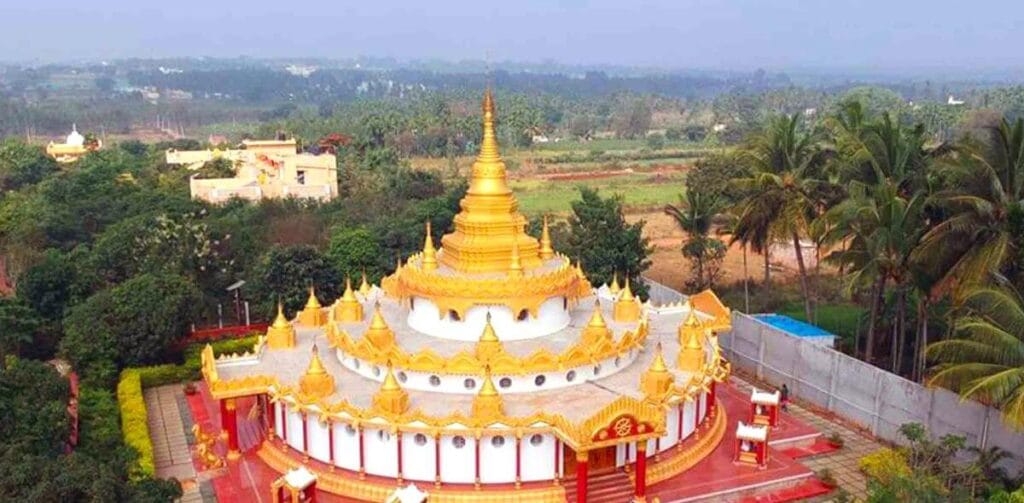
The Maha Bodhi Society Temple is located in Bangalore, Karnataka. It is designed like the Mahabodhi Temple in Bodh Gaya. This temple provides a calm place for meditation and reflection.
Inside the temple, there is a Bodhi tree, which represents Buddha’s enlightenment. The temple hosts regular meditation sessions and teachings.
It serves as a quiet retreat in the busy city of Bangalore. Visitors can connect with Buddha’s teachings and practice meditation here. The temple is a great place for anyone interested in learning about Buddhism in South India.
Hemis Monastery, Ladakh
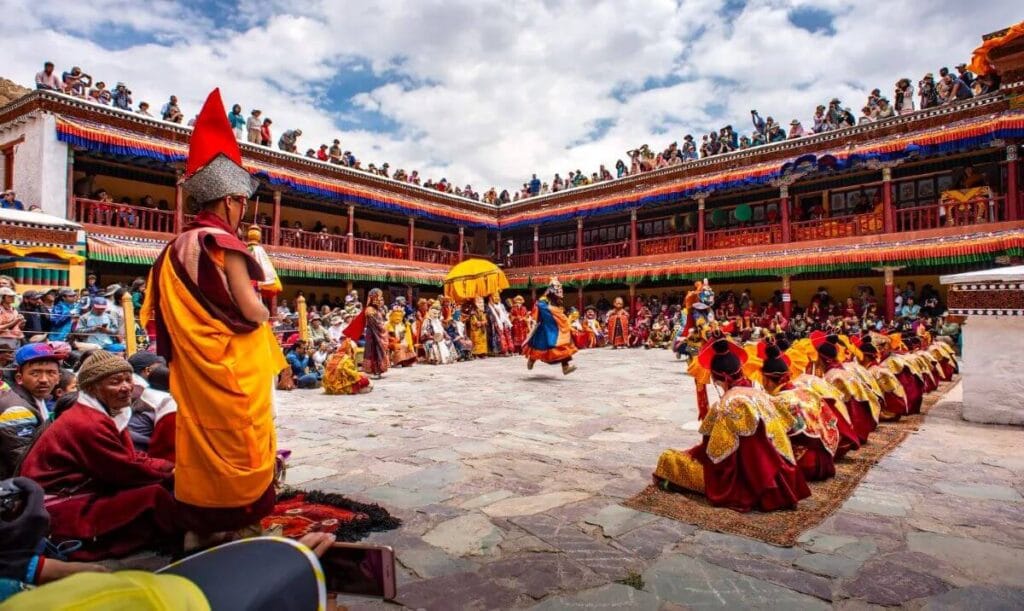
Hemis Monastery is the largest and richest monastery in Ladakh, located near Leh. It is well-known for its annual Hemis Festival, which features traditional masked dances and colorful rituals that draw thousands of visitors each year.
The monastery holds a large collection of Buddhist art, including thangkas, statues, and manuscripts. The stunning views of the surrounding Ladakhi landscape add to the monastery’s spiritual and mystical feel.
Spituk Monastery, Ladakh
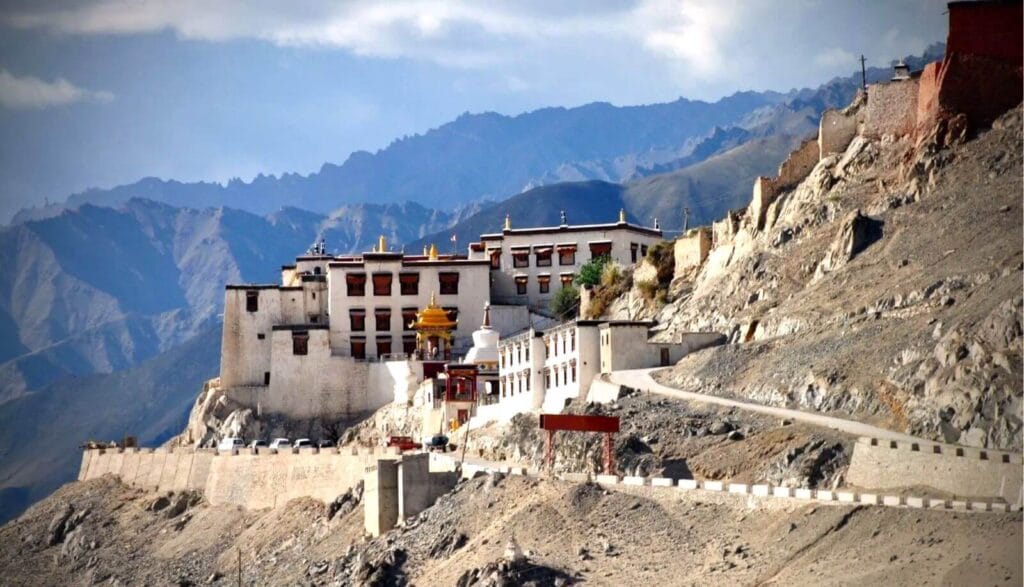
Spituk Monastery is located high above Leh and offers panoramic views of the Indus Valley. It is an excellent place for quiet reflection, featuring lovely prayer halls and ancient Buddhist relics.
The monastery is also famous for its annual festival, where monks perform traditional dances and rituals. Spituk combines spiritual importance with natural beauty, making it a must-visit spot in Ladakh.
Thiksey Monastery, Leh
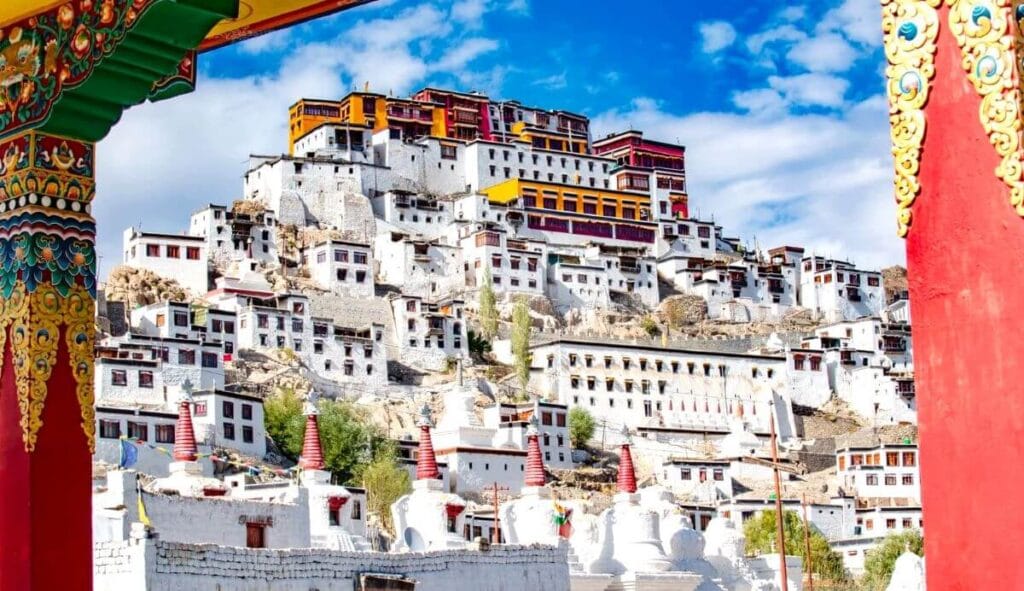
Thiksey Monastery in Leh is one of the most famous monasteries in Ladakh. It features whitewashed walls and a large statue of Maitreya Buddha, and it is often compared to the Potala Palace in Tibet. The monastery sits on a hilltop and provides breathtaking views of the valley.
Visitors can explore different temples within the monastery, each filled with detailed murals and sacred relics. Thiksey also hosts cultural events and Buddhist festivals, including the well-known Ladakh festival.
Shanti Stupa, Leh, Ladakh
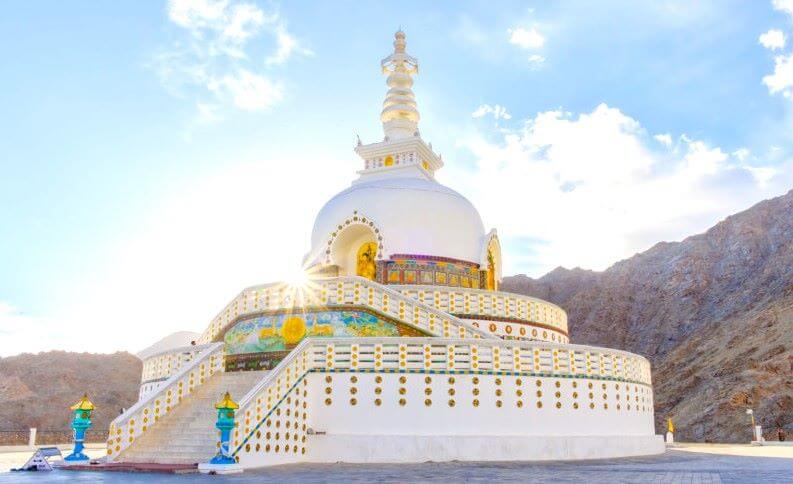
The Shanti Stupa in Leh is a symbol of peace and harmony. Japanese Buddhists built the stupa, which shines beautifully at night. This creates a calm environment for meditation. The panoramic views from the stupa are also breathtaking, making it a great spot to enjoy the natural beauty of Ladakh.
The stupa serves as a reminder of Buddha’s teachings on peace and compassion, and it has become a popular site for those seeking spiritual solace in the majestic Himalayan landscape.
Dhamekh Stupa, Sarnath
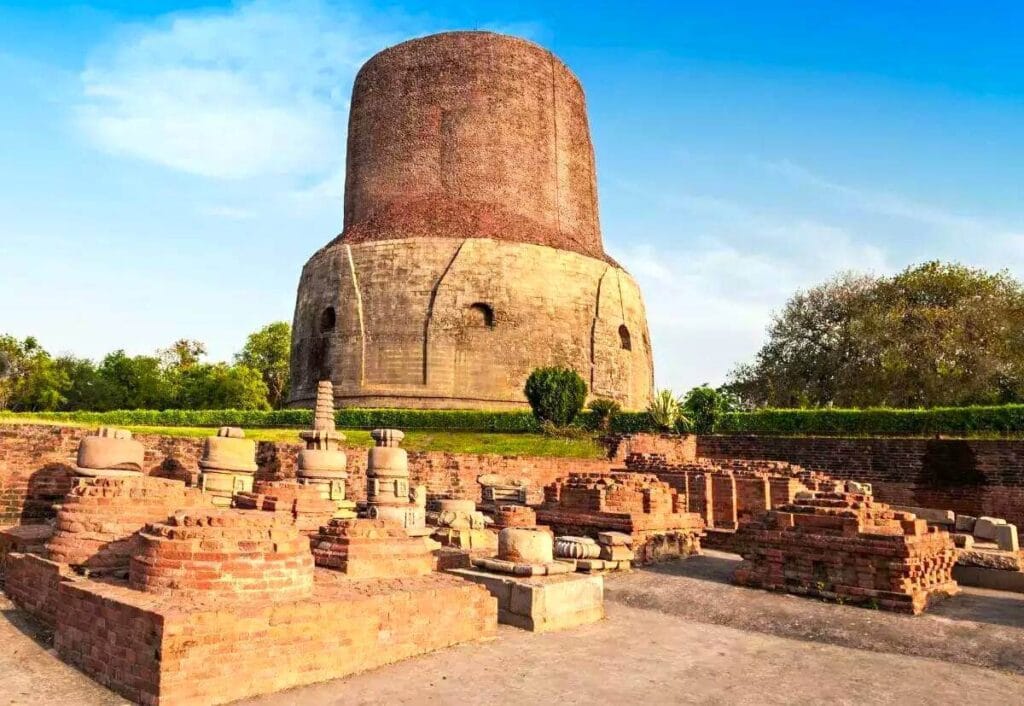
The Dhamekh Stupa in Sarnath marks the spot where Buddha gave his first sermon after becoming enlightened. It is a key symbol of the “Turning of the Wheel of Dharma.” The stupa has detailed carvings and stands tall, making it a beautiful sight.
Sarnath has peaceful surroundings and holds great historical importance, making it a key destination for Buddhist pilgrims. Visitors can also check out nearby temples and the archaeological site, which provides a glimpse into the past.
Sanchi Stupa, Madhya Pradesh
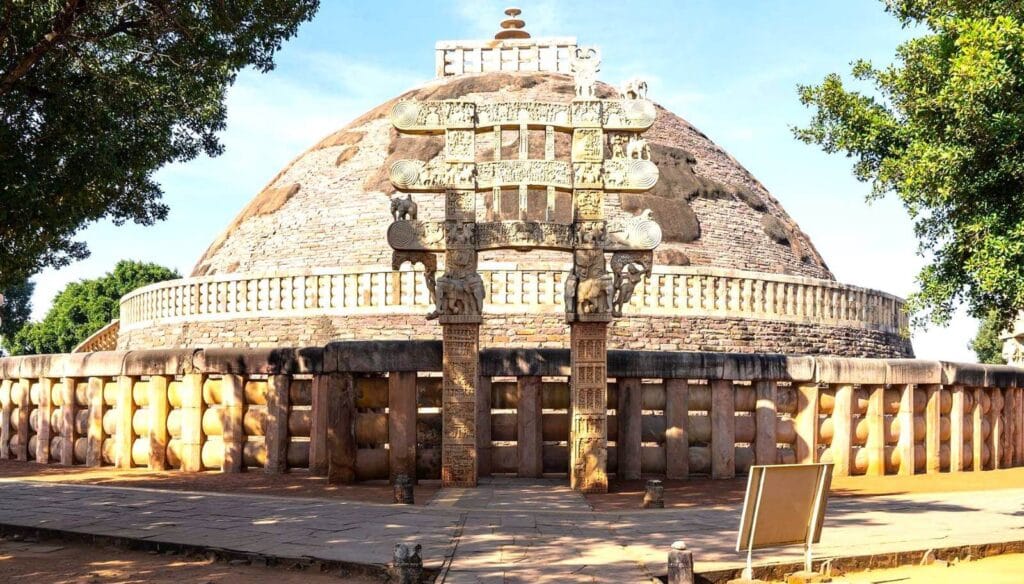
The Sanchi Stupa was built by Emperor Ashoka in the 3rd century BCE. It is one of the oldest and most respected Buddhist sites in India. The stupa is known for its large dome and beautifully carved gateways that show scenes from Buddha’s life.
This stupa is a fine example of ancient Indian architecture. Its calm surroundings make it a great place for reflection and meditation. Visiting Sanchi lets you step back in time and learn about the history and spread of Buddhism in India.
Vishwa Shanti Stupa, Rajgir, Bihar
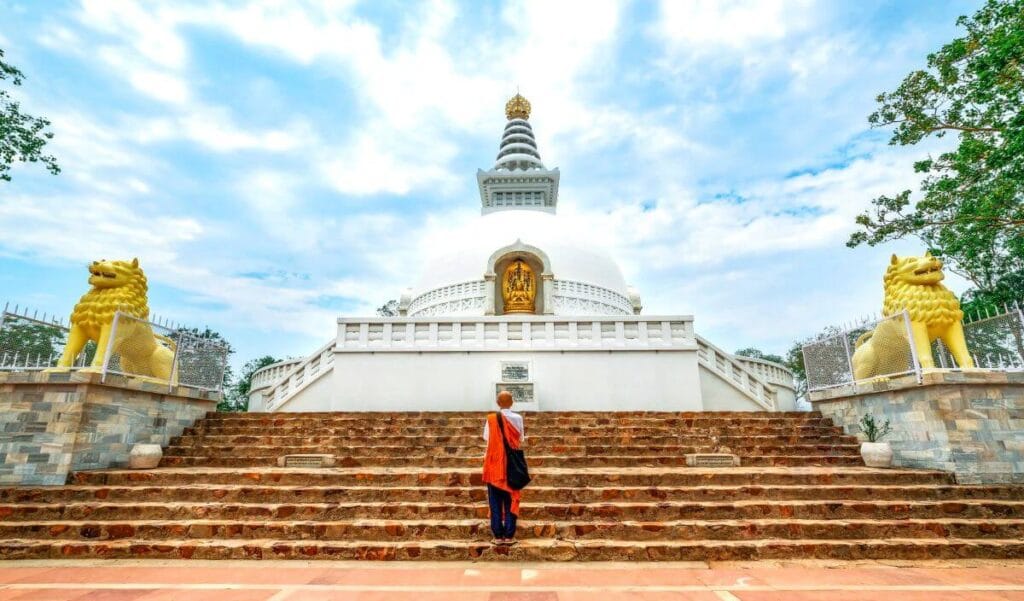
Vishwa Shanti Stupa is in Rajgir, Bihar. It is a symbol of peace and harmony, representing the teachings of Buddhism. Built by a Japanese Buddhist group, this beautiful white dome-shaped stupa provides a calm environment for visitors. It sits on a hilltop, offering great views of the surrounding area, including the picturesque Rajgir valley.
Rajgir is important to Buddhists because Lord Buddha spent many years meditating and teaching there. The Vishwa Shanti Stupa is dedicated to spreading the message of peace and non-violence, aligning with Buddha’s core philosophy of compassion and love for all living beings. The stupa is a great place for meditation and reflection, making it popular among pilgrims and tourists seeking spiritual comfort. Visitors can reach the stupa by a scenic cable car ride or by hiking up the hill, which adds to the peaceful experience.
Conclusion
India is a land deeply connected to Buddhism, offering many spiritual, cultural, and historical sites for visitors. In Bodh Gaya, you can see the calm temples where Buddha gained enlightenment. The grand monasteries in Ladakh also hold deep meaning for Buddhists and curious travelers. The Vishwa Shanti Stupa in Rajgir, the important Mahabodhi Temple in Bihar, and the Tibetan Buddhist center at Tsuglagkhang Temple in Dharamsala invite everyone to think about Buddha’s teachings.
These temples and monasteries are more than just places to pray; they are peaceful retreats where you can connect with your spiritual side. The lively festivals, old relics, beautiful architecture, and stunning landscapes make for a rewarding experience. Visiting these sacred sites helps you learn, reflect, and enjoy the rich tradition of one of the world’s oldest spiritual paths.
Whether you are a religious pilgrim, a history lover, or someone looking for peace, India’s Buddhist temples and monasteries will leave you with a sense of calm, wonder, and inspiration.
FAQs About Buddhist Temples and Monasteries
The best time to visit Buddhist temples and monasteries depends on their location:
Northern India (Bihar, UP, Himachal Pradesh, Ladakh): October to March is ideal due to the pleasant weather.
Northeast India (Sikkim, Arunachal Pradesh): March to June and September to November offer comfortable weather.
South India (Karnataka): November to February is perfect for a cool and pleasant climate.
Festivals like Buddha Purnima and local monastery events also provide a unique experience.
Yes, most Buddhist temples and monasteries in India are open to visitors of all faiths. However, visitors are expected to respect the sanctity of these sites by dressing modestly, maintaining silence, and following local customs.
Dress modestly: Wear clothing that covers your shoulders and knees.
Stay quiet: Many temples and monasteries are places of meditation and require silence.
Remove footwear: Most sites have a no-shoes policy inside their premises.
Carry essentials: In remote areas like Ladakh or Sikkim, bring water, snacks, and warm clothing.
Buddha Purnima: Celebrated across all Buddhist sites to honor Buddha’s birth, enlightenment, and death.
Hemis Festival (Ladakh): A vibrant celebration at Hemis Monastery, featuring traditional masked dances.
Tawang Festival (Arunachal Pradesh): A cultural extravaganza showcasing Buddhist rituals and local traditions.
Losar (Tibetan New Year): Observed in monasteries like Rumtek and Namgyal with rituals and festivities.
Yes, we provide guided tours to these Buddhist sites. These tours often provide historical context, cultural insights, and logistical support, making the journey more enriching.
Most monasteries and temples welcome visitors to join meditation or prayer sessions, though prior permission may be required. Some monasteries, like Namdroling Monastery and Tabo Monastery, even offer meditation retreats and teachings.
Yes, most famous Buddhist sites have accommodations ranging from budget guesthouses to luxury hotels. Many monasteries also offer basic lodging for pilgrims and spiritual seekers, such as at Bodh Gaya or Dharamsala.
Stupas are sacred structures symbolizing Buddha’s teachings, enlightenment, and Nirvana. For example:
Dhamekh Stupa, Sarnath: Marks Buddha’s first sermon.
Sanchi Stupa: Built by Emperor Ashoka to house Buddha’s relics.
Vishwa Shanti Stupa, Rajgir: Represents universal peace and harmony.
Visitors often walk around stupas clockwise as a meditative practice.
Photography is generally permitted in most Buddhist temples and monasteries, but there may be restrictions inside prayer halls or for sacred relics. Always ask for permission before clicking pictures, especially in monasteries with resident monks.
Avoid pointing feet toward statues or shrines.
Refrain from touching sacred objects unless invited.
Observe silence or maintain low voices, especially in meditation areas.
Support local communities by purchasing handmade souvenirs and contributing to temple donations.
By adhering to these practices, you can ensure a respectful and meaningful visit to India’s Buddhist temples and monasteries.

